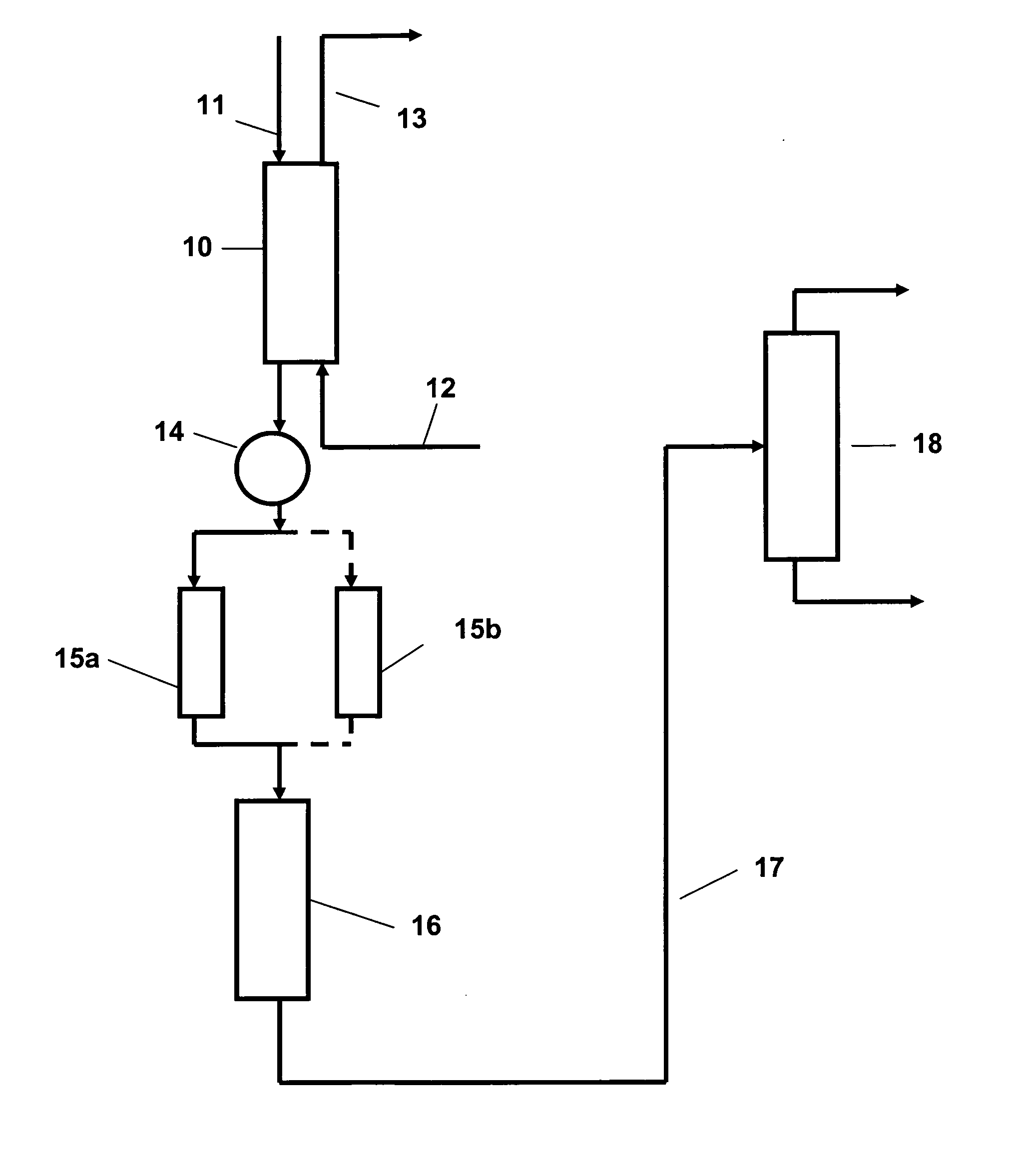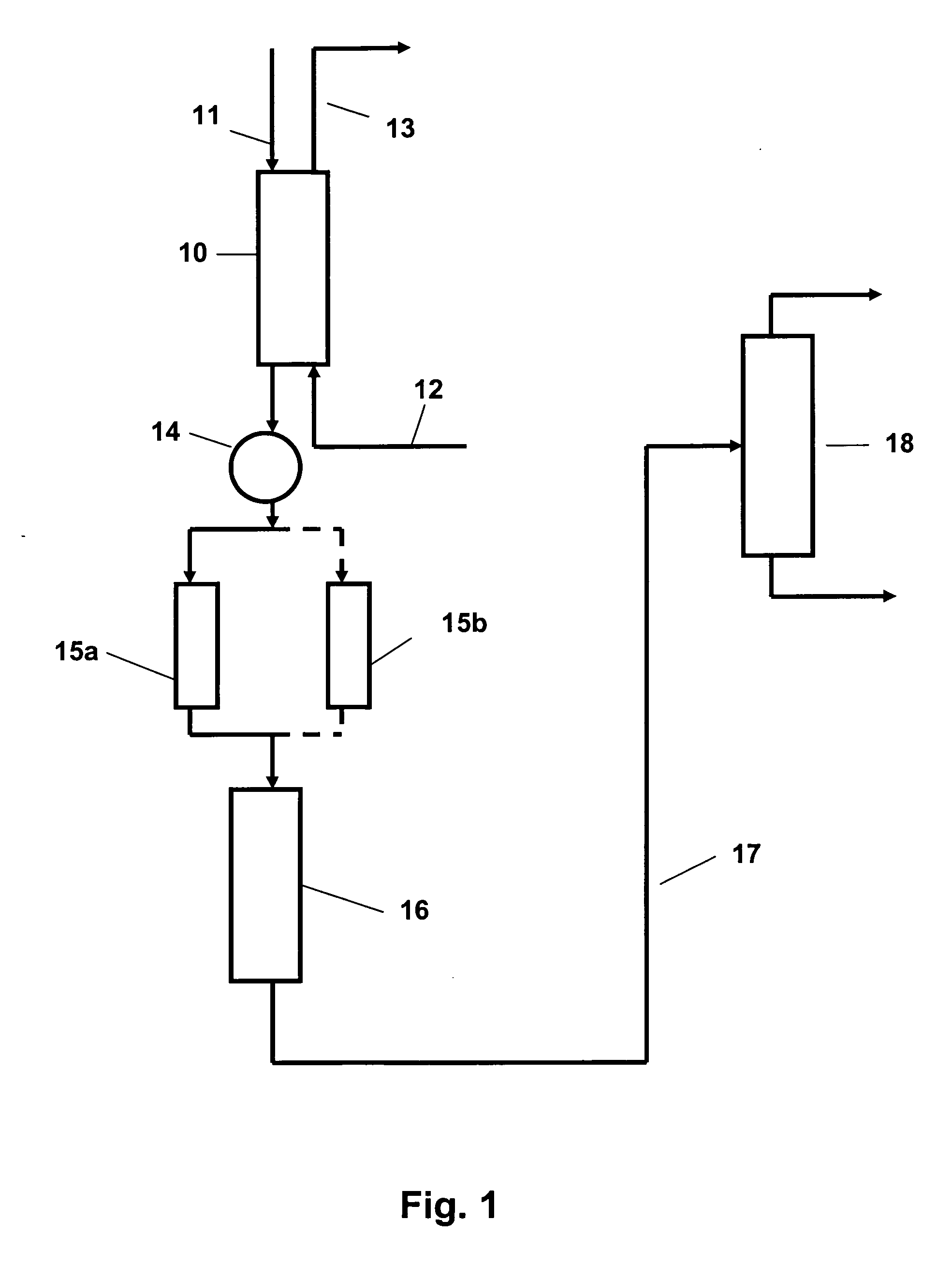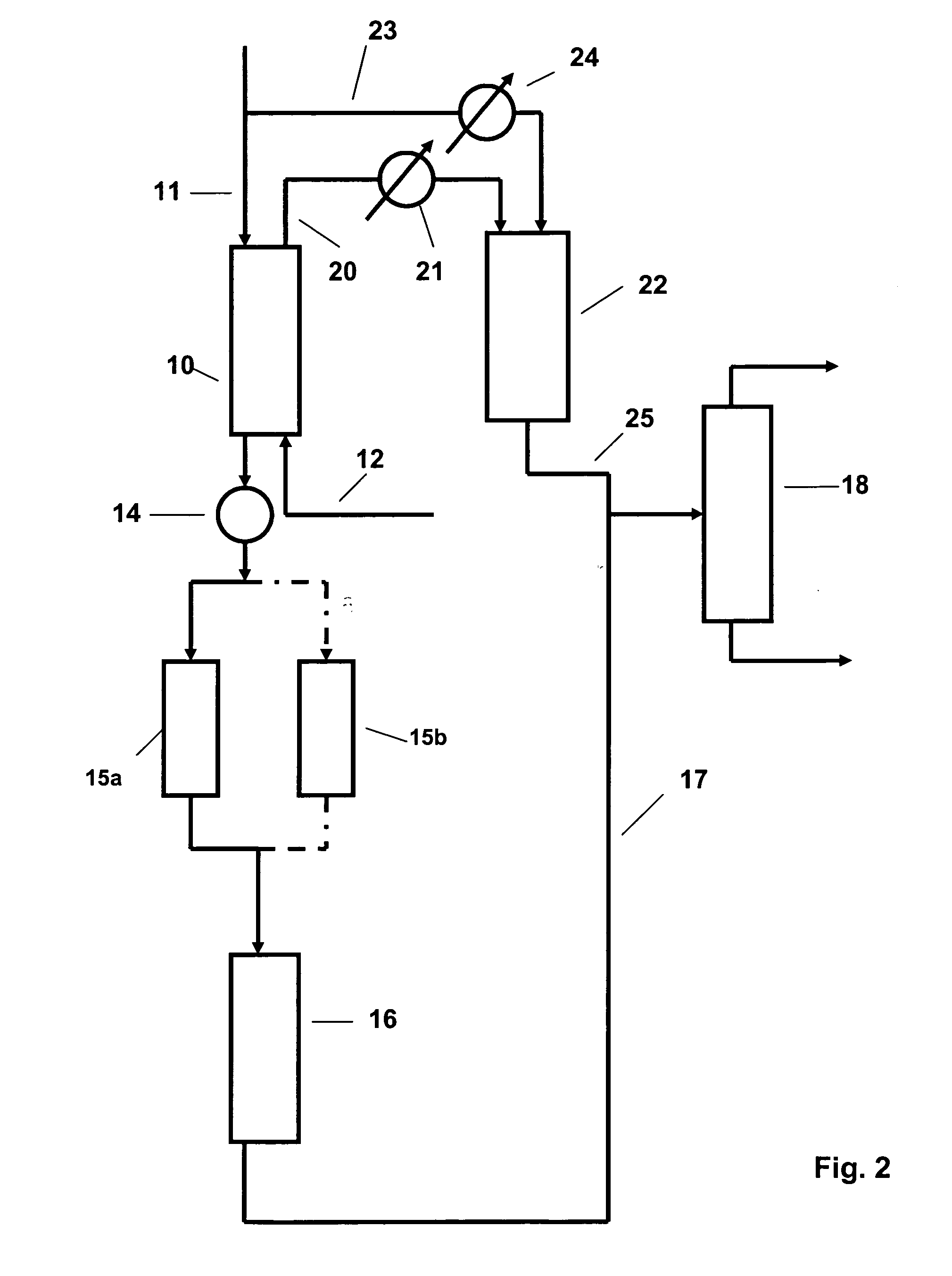In recent years, environmental laws and regulations the have limited the amount of
benzene which is permissible in
petroleum motor fuels.
Well-integrated refineries with aromatics extraction units associated with
petrochemical plants usually have the ability to accommodate the benzene limitations by diverting extracted benzene to petrochemicals uses but it is more difficult to meet the benzene specification for refineries without the
petrochemical capability.
While sale of the extracted benzene as product to petrochemicals purchasers is often an option, it has the
disadvantage of losing product to producers who will add more value to it and, in some cases, transportation may present its own difficulties in dealing with bulk shipping of a chemical classed as a hazardous material.
The removal of benzene is, however, accompanied by a decrease in product
octane quality since benzene and other single ring aromatics make a positive contribution to product
octane.
Another problem facing
petroleum refineries without convenient outlets for
petrochemical feedstocks is that of excess light olefins.
While these olefins are highly useful as petrochemical feedstocks, the refineries without petrochemical capability or economically attractive and convenient markets for these olefins may have to use the excess light olefins in
fuel gas, at a significant economic loss or, alternatively, convert the olefins to marketable liquid products.
This process has however, its own drawbacks, firstly in the need to control the
water content of the feed closely because although a limited
water content is required for catalyst activity, the catalyst softens in the presence of
excess water so that the reactor may plug with a
solid, stone-like material which is difficult to remove without drilling or other arduous operations.
Conversely, if the feed is too dry,
coke tends to deposit on the catalyst, reducing its activity and increasing the pressure drop across the reactor.
Environmental regulation has also affected the disposal of
cracking olefins from these non-integrated refineries by restricting the permissible
vapor pressure (usually measured as
Reid Vapor Pressure, RVP) of motor gasolines especially in the summer driving season when fuel volatility problems are most noted, potentially creating a need for additional olefin utilization capacity.
Like the MOG Process, however, the MBR Process required considerable capital expenditure, a factor which did not favor its widespread application in times of tight refining margins.
The MBR process also used higher temperatures and C5+ yields and octane ratings could in certain cases be deleteriously affected another factor which did not favor widespread utilization.
While these known processes are technically attractive they, like the MOG and MBR processes, have encountered the
disadvantage of needing to a greater or lesser degree, some capital expenditure, a factor which militates strongly against them in present circumstances.
The petrochemical
alkylation processes such as those referred to above, do not lend themselves directly to use in
petroleum refineries without petrochemical capacity since they require pure feeds and their products are far more pure than required in fuels production.
In addition, other problems may be encountered in the context of devising a process for motor gasoline production which commends itself for use in non-integrated, small-to-medium sized refineries.
One such problem is the olefins from the cracker contain
ethylene and propylene in addition to the higher olefins and if any process is to be economically attractive, it is necessary for it to consume both of the lightest olefins.
Because of this, it is not possible with existing process technologies, to obtain comparable utilization of
ethylene and propylene in a process using a mixed olefin feed from the FCCU.
), with consequent loss of this product.
In addition, the larger volume associated with
vapor phase operation may make limit unit capacity with smaller volume existing units are converted to this process.
 Login to View More
Login to View More 


